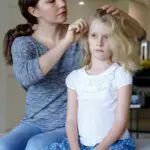Are Head Lice Dangerous to Children?
Head lice are a common health problem for children. They are primarily spread through close contact with the scalp of an infected person. However, they can also be spread through the sharing of household items, including hats, scarves, and combs. CDC estimates that between six and twelve million children in the US are infested each year. Children are especially susceptible to head lice, since they are frequently in contact with other children and can transfer the infection from one host to another.
The best defense against head lice is prevention. Regular head checkups, avoiding head-to-head contact, and wearing head lice repellents are all effective ways to prevent lice infestation. However, if the lice are present, the best course of action is to get rid of them before they lay eggs.
Lice eggs hatch nine to 10 days after infested hair, and nymphs molt nine to fifteen days later to become adult head lice. Adult head lice are capable of living up to three days away from their hosts. Lice eggs are easily mistaken for dandruff or scabs.
Head lice can affect both children and adults. People who play, go to school, or hang out with other kids are at high risk for an infestation. Children may come into contact with infested hair while playing, while adults can come into contact with infected hair during sleepovers or gyms. However, there is no reliable data regarding the number of people affected by head lice in the US each year.








